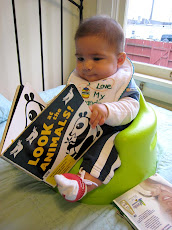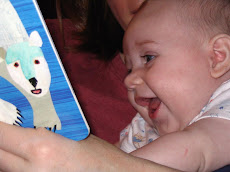Adults use time to mark and measure time, but for children the task is not as easy. Little evidence exists indicating that calander activities which mark extended periods of time (a month, a week) are meaningful for children below first grade (Friedman, 2000). Before children can make use of a calendar, they need to be able to understand that time is sequential (first comes Sunday, then Monday, and so on).
There are many relevant resources that exist in your child's world that can help them understand the sequence of a week. You can use
picture books, songs, and even photographs to help your child understand how to mark and measure time in their own world.
Some books that discuss the concept of a week include: The Very Hungry Caterpillar
The Very Hungry Caterpillar by Eric Carle: A hungry caterpillar eats various foods on each day of the week before turning into a beautiful butterfly.
 Hannah and the Seven Dresses
Hannah and the Seven Dresses by Marthe Jocelyn: A little girl wears a different dress each day of the week until her birthday comes and she can't decide which of the 7 to choose.
 Cookie's Week
Cookie's Week by Cindy Ward and Tomie de Paola: A mischievious cat gets into trouble each day of the week.
 Big Week for Little Mouse
Big Week for Little Mouse by Eugenie and Kim Fernandes: A little mouse spends a week getting ready for a special event.
 Today is Monday
Today is Monday by Eric Carle: Different animals eat their way through the days of the week.
The song
Everybody Happy by Sharon Lois and Bram is another great resource to use when teaching your little one about a week.
Everybody Happy:Today is Monday, Today is Monday
Monday the washing’
Everybody happy? But I should say:
Today is Tuesday, Today is Tuesday
Tuesday the ironing’
Monday the washing’
Everybody happy? But I should say:
Today is Wednesday, Today is Wednesday
Wednesday the gardening’
Tuesday the ironing’
Monday the washing’
Everybody happy? But I should say:
Today is Thursday, Today is Thursday
Thursday soup
Wednesday the gardening’
Tuesday the ironing’
Monday the washing’
Everybody happy? But I should say:
Today is Friday, Today is Friday
Friday Pay Day!
Thursday soup
Wednesday the gardening’
Tuesday the ironing’
Monday the washing’
Everybody happy? But I should say:
Today is Saturday, Today is Saturday
Saturday is shopping!
Friday Pay Day!
Thursday soup
Wednesday the gardening’
Tuesday the ironing’
Monday the washing’
Everybody happy? But I should say:
Today is Sunday, Today is Sunday
Sunday - Resting!
Saturday is shopping!’
Friday Pay Day!
Thursday soup
Wednesday the gardening’
Tuesday the ironing’
Monday the washing’
Everybody happy? But I should say:
Everybody happy? But I should say!
You can also create a large calander for your child using pictures of them doing activities on each day of the week. For example, on Monday, it could be a rainy day (like lately!), Tuesday is baking cookies, and so on.
Can you think of any books, songs, or activities that help children learn the days of the week?













 Eating the Alphabet by Lois Ehlert
Eating the Alphabet by Lois Ehlert





 A Giraffe and a half by S. Silverstein
A Giraffe and a half by S. Silverstein - Read lots of Alphabet Books. Alphabet Books are Great Because They ...
- Read lots of Alphabet Books. Alphabet Books are Great Because They ...









